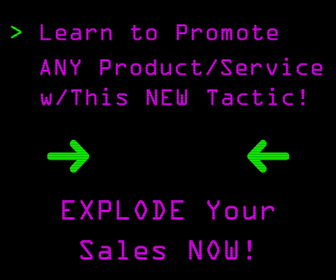For the most part, you've only got one shot at making a piece of content take off.
Unfortunately, this doesn't always happen. Some pieces get tons of likes, shares, comments, and other activity.
You're still getting feedback and new readers trickling in months, or even years, later.
But sometimes, other pieces just kind of fizzle out. This isn't always a quality issue, either.
Sometimes the things you thought were far and away your best work, just don't end up performing well for some reason.
A lot of it is luck and random factors.
The right social media share from a key influencer, for example, can skyrocket a piece of content to the top out of nowhere. You can't always control for that kind of thing.
But there are some key factors that you can control that have a profound effect on whether or not a given piece of content does well or not.
Two of the biggest ones are timing, and shareability.
In a recent blog post, Hubspot explains how posting at the right times, and making it as easy and convenient as possible for readers to share your content on social media, can help you get more mileage out of each piece of content you create.
1. Post at Ideal Times
Ask 10 different marketers when the best time to post your content is, and you’ll likely receive 10 different answers.
In an analysis of 20 studies on post times, CoSchedule found that the best times to post on Facebook were between 12-1 p.m. on Saturday and Sunday, whereas the best times to post on Twitter were between noon and 5-7 p.m. on Wednesday.
For email marketing, Kissmetrics found that open rates are the highest during the weekend.
All of this information is useful, but ultimately, you’ll receive the best results if you post when your audience is the most receptive. This means digging into your social media engagement data and forming your own conclusions.
For Facebook, the best place to start is Facebook Insights.
Click on the ‘Posts’ tab, and you’ll be shown which days and times your followers are most active on the platform. You can also compare different days of the week to determine behavioral trends — for example, comparing activity on Saturday or Sunday to a weekday.
Under the ‘All Posts Published’ menu, you can see engagement data for each post as well as the time and date the post was published. See if there are any commonalities in timing for your most popular posts.
To discover the best posting time for your audience on Twitter, I recommend using the tool Tweriod. There, you can sign in with your Twitter account, and the tool will perform an analysis of your followers and tweets. When complete, it will send you a complete report of the best times to post based on the data.
2. Make it Easy to Share
In order for a piece of content to generate maximum engagement, you need to make it as easy (and as worthwhile) as possible to share it. I recommend including bright, visible social sharing buttons directly beneath the post — and, if possible, in your sidebar.
For the most compelling quotes and statistics in your post, make them stand out and consider using something like Click To Tweet to turn them into tweetable links. This tool also provides full analytics data, so you can compare the performance of your links.
If your new piece of content is an infographic, include an HTML code to embed it beneath the infographic, so that other bloggers can easily insert it into their site — a tactic that can also be beneficial for SEO purposes.
You can find more ways to get the most out of your content, as well as ways to salvage underperforming content you've posted in the past, in the full blog post from Hubspot.
CHALLENGE Yourself to Profit!
Free Download: Build Your Profit-Generating Online Business With This Free Blueprint
Sign Up, follow the easy steps and You'll get the tactics, strategies & techniques needed to create your online profit stream. It's free!



